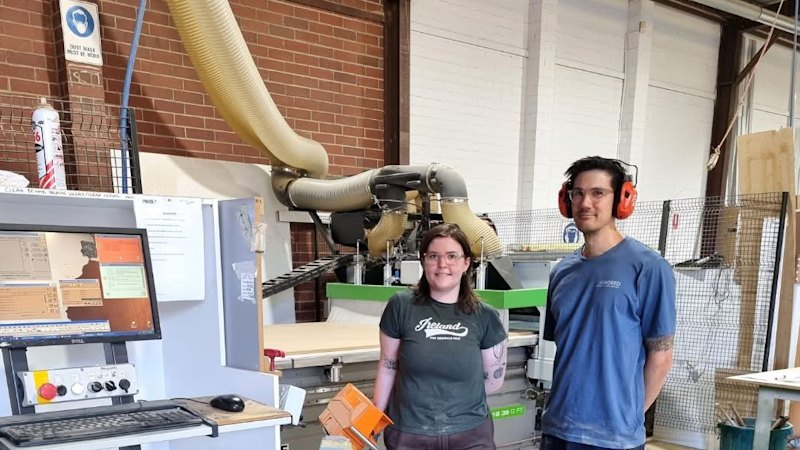
URGENT UPDATE: A significant trend is emerging in Western Australia as university graduates struggle to find jobs, prompting many to pivot towards trade professions. This shift is exemplified by Simon Ashby, who at 34 years old, left his nine-year office job to become an apprentice cabinetmaker in Perth.
Just announced by the state government, a new initiative set to launch in January 2026 will add six more construction trades and pre-apprenticeships to the fee-free and low-fee TAFE courses, responding to the growing demand for skilled trades. Amber-Jade Sanderson, the Skills and TAFE Minister, emphasized the need to address labor shortages in housing and clean energy, stating, “You are guaranteed a job if you do an electrical trade. They are well-paid jobs, and they’re secure jobs in Western Australia.”
With the participation rate in ATAR courses dropping to just 27 percent of school leavers in 2025, more students are embracing vocational education and training (VET) as a viable career path. Publicly funded enrolments at WA TAFE colleges have surged by 25.5 percent since 2020, reflecting a significant shift in career aspirations among young people.
Simon Ashby, now 38, recalls his journey from despair in an unfulfilling office job to finding passion in woodworking. “I always thought it might be too late, but it wasn’t,” Ashby said. “My wife told me I would always regret it if I didn’t try.” After securing an apprenticeship, he began his studies at North Metropolitan TAFE and has already been recognized as a finalist for the WA Apprentice of the Year 2024.
Despite the increase in trade enrollments, university graduates are facing alarming rates of underemployment. A recent report from Pearson revealed that full-time employment for undergraduates fell to 74 percent in 2024, while the entry-level job market has shrunk significantly, accounting for less than 11 percent of all advertised positions.
Taha Haidermota, Pearson’s country head, highlighted the disconnect between education and employment, noting that Australia loses a staggering $104 billion annually during the transition from education to work. “Every young person who doesn’t get into a career is a loss of income, confidence, and opportunity,” he stated.
The unemployment rate for young people in WA is approximately 10 percent, nearly double the overall rate, underscoring the urgency for innovative solutions in hiring practices. Haidermota calls for employers to create more internships and apprenticeships, particularly in the resources sector, which employs up to 50 percent of WA’s workforce.
As the landscape of employment continues to evolve, the push towards vocational training represents a critical opportunity for young Australians. With government initiatives and a growing recognition of the value of trades, students are encouraged to explore diverse pathways to successful careers outside traditional university routes.
This developing situation invites all school-leavers and their families to reassess their options. The message is clear: university is not the only path to a rewarding career, and embracing trades could lead to job security and fulfillment.







